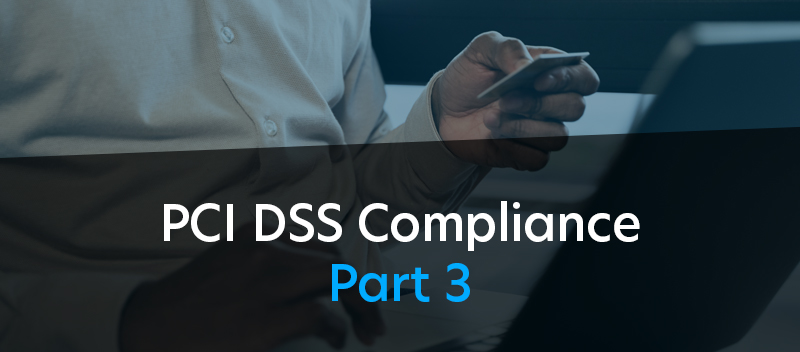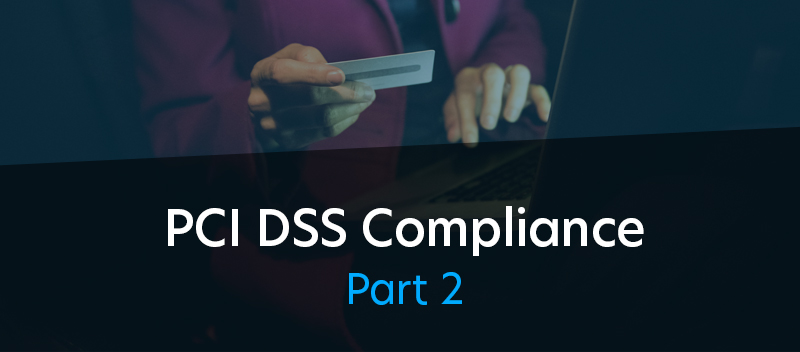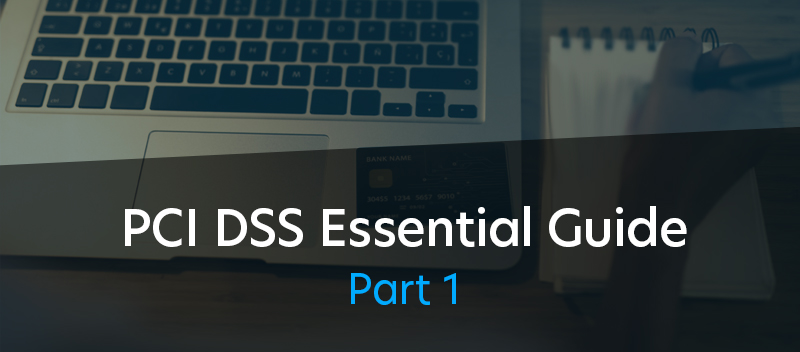Avoiding the Pitfall: An In-Depth Look at PCI Fines and How to Avoid Them

The Payment Card Industry Data Security Standard (PCI DSS) is a set of requirements to ensure that all companies that process, store, or transmit credit card information maintain a secure environment. Major credit card companies spearhead the initiative to protect against data breaches and fraud.
Despite these protective measures, breaches continue to occur, leading to the imposition of fines and penalties by regulatory bodies. These fines are not merely punitive but serve as a stark reminder of the importance of compliance in protecting consumer data.
Non-compliance with PCI DSS can lead to severe consequences for businesses, including increased scrutiny and reputational harm that can significantly erode customer trust. Thus, adherence to PCI DSS is vital not only to meet regulatory requirements but also to ensure the security and reliability of a business in handling payment card transactions. Keep reading to learn more.
Understanding the Factors Leading to PCI Fines
Navigating the complexities of PCI DSS compliance can be challenging for many organizations, but a deeper understanding of what leads to fines can help avoid them.
Several infractions can lead to PCI fines, but some are more prevalent than others. These include:
- Inadequate Protection of Cardholder Data: Failure to encrypt cardholder data, both stored and transmitted, is a frequent violation. Encryption acts as a critical barrier against unauthorized access.
- Lack of a Secure Network: Not maintaining a firewall or using default passwords and security parameters can leave a network vulnerable to attacks.
- Insufficient Access Control Measures: Organizations must restrict access to cardholder data to only those individuals whose job requires such access. Neglecting this can lead to unauthorized data exposure.
- Failure to Maintain a Vulnerability Management Program: Regularly updating antivirus software and developing secure systems and applications are essential to protect against new threats.
- Neglecting to Monitor and Test Networks: Continuous monitoring and regular testing of security systems and processes are crucial to detect any vulnerabilities promptly.
- Poor Vendor Compliance: Often, businesses need to pay more attention to the need to ensure their vendors also comply with PCI DSS, which can lead to indirect breaches.
Data breaches and security incidents have a profound impact on an organization’s PCI compliance status:
- Immediate Non-Compliance: A breach typically indicates failing to comply with one or more PCI DSS requirements.
- Increased Scrutiny: Following a breach, businesses often undergo more rigorous audits and assessments to evaluate the extent of non-compliance and prevent future incidents.
- Reputational Damage: Breaches make headlines, and public scrutiny can significantly damage consumer trust and confidence.
- Financial Repercussions: Beyond fines, companies face potential compensation claims, higher transaction fees, and the cost of remedial actions to restore security and compliance.
Understanding these factors is crucial for businesses to prioritize their compliance efforts and invest in the necessary measures to avoid the financial and reputational costs associated with PCI DSS non-compliance.
Learn more about our PCI DSS services Here
Exploring Strategies to Prevent PCI Fines
Maintaining PCI DSS compliance is essential for several reasons:
- Protects Cardholder Data: At its core, compliance helps protect sensitive cardholder information from breaches and theft.
- Minimizes Risk of Fines: Adhering to PCI standards significantly reduces the risk of incurring penalties and fines due to non-compliance.
- Builds Customer Trust: Demonstrating compliance can enhance consumer confidence in your business, knowing their data is secure.
- Avoids Financial Losses: Beyond fines, compliance helps avoid costs associated with data breaches, such as legal fees, compensation, and loss of business.
Adopting and maintaining security best practices is key to PCI DSS compliance. Here are some strategies:
- Conduct Regular Risk Assessments: Identify vulnerabilities by regularly assessing your IT environment and payment processing systems.
- Encrypt Sensitive Data: Use strong encryption to store and transmit cardholder data to ensure it’s unreadable to unauthorized parties.
- Implement Access Controls: Limit access to cardholder data to only those employees who need it to perform their job functions.
- Maintain a Secure Network: Install and maintain firewalls to protect data and ensure you’re not using vendor-supplied defaults for system passwords and other security parameters.
- Regularly Update Software: Keep security software and other critical software components up to date to protect against the latest threats.
- Educate Employees: Provide regular training on data security practices and PCI DSS compliance requirements to ensure staff know their roles in maintaining security.
- Work with Compliant Vendors: Ensure that any third-party vendors who handle your cardholder data are also PCI DSS compliant.
- Regular Monitoring and Testing: Continuously monitor and test networks and processes to detect vulnerabilities and fix them promptly.
Integrating these practices into your business operations enhances your security posture, ensuring PCI DSS compliance and significantly lowering the risk of data breaches and associated fines.
Compliance Monitoring and Reporting
Regular assessments and audits are essential components of an effective compliance monitoring strategy. They help organizations identify potential compliance gaps and address them proactively.
- Conduct Periodic Assessments: Regularly evaluate your compliance with PCI standards to ensure ongoing adherence. These assessments can help pinpoint vulnerabilities and areas for improvement.
- Perform Internal and External Audits: Internal audits can be conducted by your in-house team to monitor compliance continuously. External audits performed by third-party assessors provide an unbiased review of your compliance status.
- Utilize Automated Tools: Leverage automated compliance monitoring tools to streamline the assessment process. These tools can provide real-time insights into compliance status and highlight discrepancies.
Furthermore, reporting is critical to compliance monitoring, providing evidence of an organization’s commitment to maintaining PCI standards.
- Maintain Detailed Records: Keep comprehensive records of all compliance-related activities, including assessments, audits, and corrective actions.
- Submit Regular Reports: Depending on your organization’s merchant level, PCI DSS requires the submission of regular reports to your acquiring bank or card brands.
- Immediate Incident Reporting: In the event of a security breach or compliance failure, promptly report the incident to the relevant parties, including your acquiring bank, payment brands, and possibly customers, depending on the severity of the breach.
A robust compliance monitoring and reporting framework ensures your organization meets PCI standards.
Mitigation Measures and Incident Response
A well-crafted incident response plan (IRP) is foundational to a robust cybersecurity strategy. It ensures that an organization can respond swiftly and effectively to mitigate the impact of security breaches. It must:
- Establish Clear Objectives: The IRP should define clear objectives, including minimizing damage, reducing recovery time and costs, and maintaining stakeholder trust.
- Identify Key Roles and Responsibilities: Designate a response team with defined roles and responsibilities. This team is responsible for executing the IRP and managing the response to an incident.
- Communication Plan: Develop a communication strategy outlining how and when to communicate with internal stakeholders, affected customers, and regulatory bodies.
- Regular Training and Simulations: Conduct regular training for the incident response team and simulate security incidents to test the plan’s effectiveness and team readiness.
Most importantly, immediate and decisive action is crucial in a data breach. Following predefined steps can help contain the breach and minimize its impact.
- Immediate Containment: As soon as a breach is detected, take steps to contain it. This might involve disconnecting infected systems from the network to prevent further spread of the breach.
- ssessment and Investigation: Quickly assess the scope and impact of the breach. Determine which systems, data, and services are affected. Begin an investigation to understand how the breach occurred.
- Eradication and Recovery: Once the breach has been contained and assessed, work on eradicating the cause of the breach. Then, recovery procedures will be initiated to restore any impacted services or data.
- Notification: Notify all relevant parties, including regulatory bodies, affected customers, and other stakeholders, by legal requirements and the IRP’s communication plan.
- Post-Incident Review: Conduct a thorough review to identify lessons learned after managing the incident. Use these insights to strengthen the IRP and prevent future breaches.
Preparing in advance and following a structured approach to incident management can protect assets, reputation, and stakeholders from the adverse effects of cyber incidents.
Empowering Your Business Through PCI DSS Compliance
A commitment to PCI DSS compliance is not just a legal requirement but a testament to an organization’s dedication to security and customer protection. For businesses seeking further guidance on navigating the intricacies of PCI compliance and fortifying their defense mechanisms against potential breaches, consulting with expert services like TrustNet can provide invaluable insights and support.
TrustNet specializes in helping organizations achieve and maintain PCI DSS compliance, offering tailored solutions that address specific security needs and compliance challenges. By embracing the principles of PCI DSS compliance, organizations can safeguard their operations, protect their customers, and secure their future in the digital marketplace.




